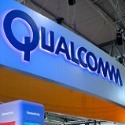Chipmaker says momentum is growing around the connected car technology, with commercial product launches now in sight following RED certification in Europe.

The adoption of cellular vehicle-to-everything (C-V2X) technology was given a boost this week when Qualcomm announced that "multiple" products (such as car on-board units) from automotive and infrastructure suppliers that include its 9150 C-V2X platform have gained certification in accordance with the Radio Equipment Directive (RED) in Europe.
According to the chipmaker, "this is a major step forward toward the commercial introduction of C-V2X in Europe." Qualcomm said the technology has also continued to gain momentum in China and the US following more trials and noted that recent plugtests organized by ETSI and the 5G Automobile Association (5GAA) have demonstrated multivendor interoperability.
C-V2X emerged as the cellular industry's preferred solution for connected cars in the 5G era, although its path to commercial rollout has been somewhat long and tortuous. For instance, in April 2019 the European Commission was reported to have backed plans to promote a Wi-Fi-based standard over 5G, although that plan was scuppered following intense lobbying by groups such as the Global mobile Suppliers Association (GSA), European Telecommunications Network Operators (ETNO) and 5G Automobile Association (5GAA). (See 5G Back in Europe's Connected Cars Race After Latest Twist.)
There is also a competing protocol in the US, dedicated short-range communication (DSRC) technology, although the Federal Communications Commission (FCC) is now considering a proposal that would require automakers to use C-V2X for car-to-car communications. (See FCC Proposes C-V2X Mandate for Connected Cars and Connected Car Industry Struggles With C-V2X vs. DSRC Questions.)
In January 2020, FCC chairman Ajit Pai said the FCC "recognizes the promise of C-V2X, having voted unanimously in December on a proposal to designate 20 megahertz for its deployment in the 5.9 GHz band." Pai made the statement following the announcement of an upcoming C-V2X deployment in Northern Virginia by Audi, Qualcomm and the Virginia Department of Transportation.
Pai added: "If this proposal is adopted, it would be a significant step forward for automotive safety, since there is currently no spectrum designated for C-V2X. Americans on the move would be the beneficiaries – but only if the FCC takes action and leaves the failed status quo behind." For more on this topic, see:
— Anne Morris, contributing editor, special to Light Reading
About the Author(s)
You May Also Like





.jpeg?width=300&auto=webp&quality=80&disable=upscale)





